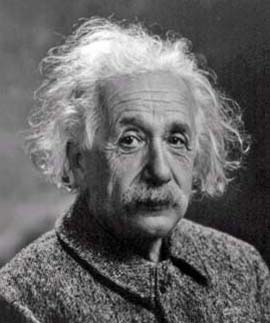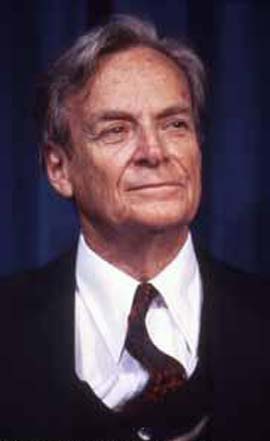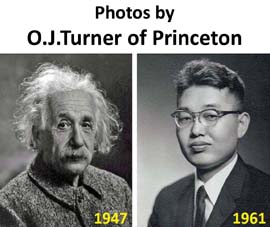Hegelian Approach to Physics

|
| Portrait of Hegel from the public domain. |
Later, Karl Marx and others attemped to use the dialectric approach to formulate the theory of society. I am not able to make any comments on this aspect of Hegelianism.
When Hegel formulated his philosophy, he did not know physics. Since Hegel's time, physics made some progress. Let us see how Hegelianism works in physics. We cab use the numbers 1, 2, and 3 for thesis, and anti-thesis, and synthesis.
- Isaac Newton produced his physics according to
- Closed orbits for planents.
- Open oribits for comets.
- Second-order differential equation.

Maxwell's statue in Edinburgh.
I was there (June 2013). - Closed orbits for planents.
- James Clerk Maxwell combined all
laws of electricity and magnetism into a quartet of equations.
- Electricity.
- Magnetism.
- Electomagnetic radiation for this wireless world.
- Electricity.
- Max Planck established the
harmony in low and high frequency limits of black-body radiation. In so doing
he came up with the concept of quantum.
- Radiation law for low frequencies.
- Radiation law for high frequencies.
- Plack's constant.

This photo is in the public domain. It was produced in 1947 by Orren Jack Turner, who produced this photo of myself in 1961. - Radiation law for low frequencies.
- Albert Einstein noted
that Newton's mechanics is covariant in the Galilean system while Maxwell's
electromagnetism is Lorentz-covariant.
- Galilean transformations for Newtonian mechanics.
- Lorentz transformations for Maxwell's equations.
- Lorentz-covariant mechanics.
Einstein also observed that Newtonian particles and massless particles have different energy-momentum relations.
- Energy-momentum relation for slow particles.
- The same relation for massless particles.
- E = mc 2.
Click here for further contents of Einstein's energy-momentum relation.
- Galilean transformations for Newtonian mechanics.
-
Heisenberg observed that matter can be regarded as particles and
can also be regarded as waves.
- Particles.
- Waves.
- Uncertainty Principle.

Weinberg with Sam Treiman from the "Prince" (Princeton University newspaper 1985). Treiman was Weinberg's thesis advisor. I like this photo because I also have a photo with Treiman taken in 1987.
Click here if you are interested. - Particles.
-
Glashow, Salam and Weinberg observed that electromagnetic and weak
interactions can be combined. This combined theory is known as the standard
model. This theory predicts the existence of the Higgs boson.
- Electromagnetic interaction.
- Weak interaction.
- Higgs boson.
- Electromagnetic interaction.
- Richard Feynman
said the adventure of our science of physics is a perpetual
attempt to recognize that the different aspects of nature are really different
aspects of the same thing.
In saying this Feynman extends Hegelianism from dialectic to tria-alectic or multi-alectic approach to physics. Synthesis does not have to be composed of two. It can come from more than two. Click here for a synthesis of three papers by Feynman.
As for the traditional dialetic approach, Feynman made the following contribution. Relativity and quantum mechanics are two greatest physical theories formulated in the 20th Century. Can they be synthesized?
- Special relativity.
- Quantum Mechanics.
- Feynman diagrams .

Feynman in 1986, from AIP Emilio Segre Visual Archives

- However, Feynman diagram can handle only scattering problems, like open orbits
before Newton. How about bound state problems? I worked on the
question of whether the harmonic oscillator can be consistent with
special relativity.
- Special relativity.
- Harmonic oscillators for bound states.
- Lorentz-covariant oscillators, which can explain, among others, why the quark model and the parton model are two different manifestations of the same covariant entity. On this oscillator formalism, I worked mostly with Marilyn Noz since 1971. Click here for the latest review article on this subject.
Then we are led to the question of whether Feynman diagrams and covariant oscillators can be combined into one theory while they take different mathematical forms.
- Feynman diagrams.
- Covariant oscillators.
- Both share the same set of physical principles.
Click here for details.
- There are many books on Hegel's philosophy. I attempted to read some of them,
but I coud not understand what Hegel really wanted to say. Only after writing
physics papers for more than 50 years, and only after contructing this webpage,
I am beginning to understand Hegel.
In mathematics, there is an abstract theory called "group theory." Presumably some people can do group theory without writing down matrices, but I cannot. Without matrices, particularly two-by-two matrices, I cannot do group theory.
Likewise, we need history of physics to understant Hegelianism. I am not able to see how one can do it otherwise. It is said that Karl Marx formulated his idealogy based on Hegel, but I do not understand Marxism because Marx in his book does not give physical examples. Here is my Marx file.
Hegelhaus in Stuttgart

|
- Georg Wilhelm Friedrich Hegel (1770-1831) was born in this house. Another view. This photo is is from the Wikipedia and is in the public domain.
- He spent his first 18 years in this house.
- Helgelhaus Museum. This house is now a museum dedicated to Hegel.
- The house remained intact during World War II, while the city was flattened due to American and British bombings. The house has a number of bullet wounds.
- Interior walls were resurfaced
on the original wooden walls.
- Hegel then went to Tubingen to study.
- Final 13 years. This wall says Hegel spent final 13 years in Berlin. This is his grave stone in Berlin (photo from the public domain).
- Koenig Wilhelm was the
king of Wurttemberg during Hegel's time. Presumably this portrait was
in Hegel's house.
- Hegel's portrait. It was a great honor for me to have a photo with him. Here is my photo with Hegel's bust.
- Hegel teaching his students. Hegel's books are displayed in front of this portrait.
- Portrait of Hegel with his
black cap. His cap
is shown here together with his note books.
- The landscape of Stuttgart during Hegel's years.
- Household items during Hegel's years.
- Hegel used to go this this church with his mother. This church building was rebuilt after World War II.
- The church organ is a great
landscape.
- There are many books on Hegel's philosophy. These books were written in Chinese, Korean, and in Italian.
- These books are in German and Japanese. There are also books written in Chinese and Korean.
- There must be many books written in English. I am not able to understand
why the museum does not display those books in English. I had the same
problem when I visited the Kant museum in
Kaliningrad.
- Click here for Stuttgart for
Mercedes-Benz.

|

|

|
Y. S. Kim (May 2012)

|
| Who is this young man? |
- Click here for his
home page.
- His Einstein page.
- His style page.